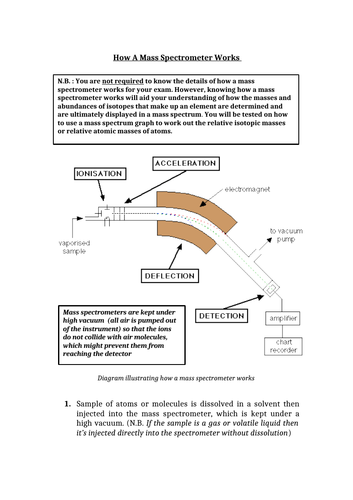





A structured KS5 lesson including starter activity, AfL work tasks and main work task all with answers on Mass Spectroscopy. Suitable for OCR AS Chemistry
By the end of this lesson KS5 students should be able to:
- To determine the relative atomic masses and relative abundances of the isotope using mass spectroscopy
- To calculate the relative atomic mass of an element from the relative abundances of its isotope
Declaimer: Please refrain from purchasing this popular resource for an interview lesson or a formal observation. This is because planning your own lessons, including using your own lesson PowerPoints, is a fundamental skill of a qualified/unqualified teacher that will be assessed during the scenarios outlined above
Something went wrong, please try again later.
This resource hasn't been reviewed yet
To ensure quality for our reviews, only customers who have purchased this resource can review it
Report this resourceto let us know if it violates our terms and conditions.
Our customer service team will review your report and will be in touch.